#orthodox art
Photo

A friend’s father chats with a nun at Probota Monastery
Probota (Dolhasca), Suceava County, Romania
11 April 2023
Fujifilm X100V
929 notes
·
View notes
Text

“Therefore, confess your sins to one another and pray for one another, that you may be healed. The fervent prayer of a righteous person is very powerful.”
James 5:16
#christianity#christian#religion#catholic#catholicism#orthodox#orthodox christianity#christian art#catholic art#orthodox art#orthodox Christian art#theology#faith#spirituality#bible verse#book of james#bible quote#daily bible verse#christian bible#bible reading#bible study#daily scripture#holy scripture#biblical scripture#word of christ#the word of the lord#the word of god
190 notes
·
View notes
Note
Can you make a post about the evolution of Greek art from the ancient times until now in modern age?
Because we often talk about the evolution of art but unfortunately we don't appreciate after ancient times the other art movements Greece went through the centuries.
That’s true! I am sorry for taking ages to answer this but I don't know how it could take me less anyway hahaha I made this post with summaries about all artistic eras in Greek history. I have most of it under a cut because with the addition of pictures it got super long, but if you are interested in the history of art I recommend giving it a try! I took advantage of all 30 pictures that can be possibly attached in a tumblr post and I tried to cover as many eras and art styles as possible, nearly dying in the process ngl XD I dedicated a few more pictures in modern art, a) because that was the ask and b) because there is more diversity in the styles that are used and the works that are available to us in great condition in modern times.
History of Greek Art
Greek Neolithic Art (c. 7000 - 3200 BC)
Obviously, with this term we don’t mean there were people identifying as Greeks in Neolithic times, but it defines the Neolithic art corresponding to the Greek territory. Art in this era is mostly functional, there are progressively more and more defined designs on clay pots, tools and other utility items. Clay and obsidian are the most used materials.
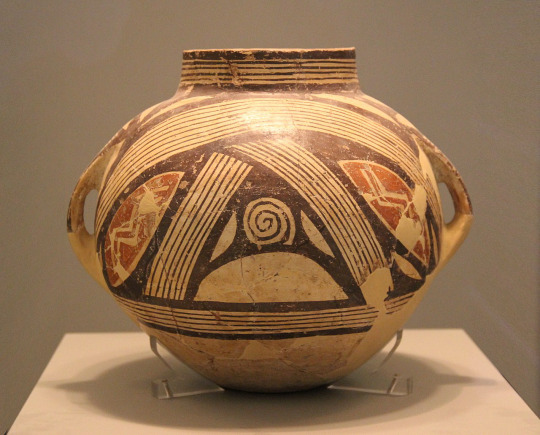
Clay vase with polychrome decoration, Dimini, Magnesia, Late or Final Neolithic (5300-3300 BC).
Cycladic Art (3300 - 1100 BC)
The art of the Cycladic civilisation of the Aegean Islands is characterized by the use of local marble for the creation of sculptures, idols and figurines which were often associated to womanhood and female deities. Cycladic art has a unique way of incidentally feeling very relevant, as it resembles modern minimalism.

Early Cycladic II (Keros-Syros culture, 2800–2300 BC)
Minoan Art (3000-1100 BC)
The advanced Minoan civilisation of Crete island was projecting its confidence and its vibrancy through its various arts. Minoan art was influenced by the earlier Egyptian and Near East cultures nearby and at its peak it overshadowed the rest of the contemporary cultures and their artistic movements in Greece. Colourful, with numerous scenes of everyday life and island life next to the sea, it was telling of the society’s prosperity.

The Bull-leaping fresco from Knossos, 1450 BC.
Mycenaean Art (c. 1750 - 1050 BC)
Mycenaean Art was very influenced by Minoan Art. Mycenaean art diverged and distinguished itself more in warcraft, metalwork, pottery and the use of gold. Even when similar, you can tell them apart from their themes, as Mycenaean art was significantly more war-centric.
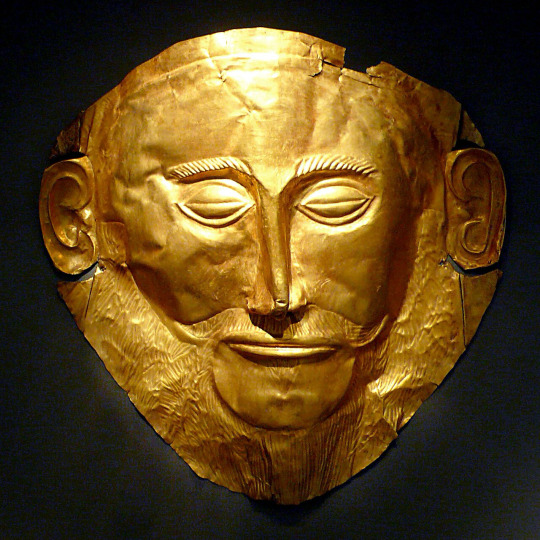
The Mask of Agamemnon in the National Archaeological Museum of Athens. The mask likely was crafted around 1550 BC so it predates the time Agamemnon perhaps lived.
Geometric Art (1100 - 700 BC)
Corresponding to a period we have comparatively too little data about, the Geometric Period or the Homeric Age or the Greek Dark Ages, geometric art was characterized by the extensive use of geometric motifs in ceramics and vessels. During the late period, the art becomes narrative and starts featuring humans, animals and scenes meant to be interpreted by the viewer.

Detail from Geometric Krater from Dipylon Cemetery, Athens c. 750 BC Height 4 feet (Metropolitan Museum, New York)
Archaic Art (c. 800 - 480 BC)
The art of the archaic period became more naturalistic and representational. With eastern influences, it diverged from the geometric patterns and started developing more the black-figure technique and later the red-figure technique. This is also the earliest era of monumental sculpture.
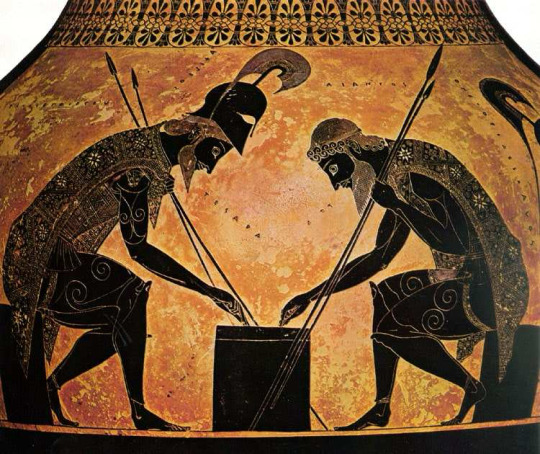
Achilles and Ajax Playing a Board Game by Exekias, black-figure, ca. 540 B.C.
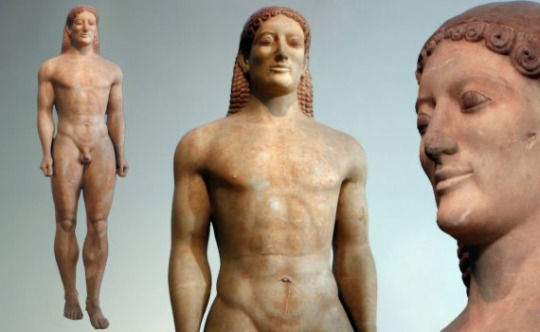
Kroisos Kouros, c. 530 B.C.
Classical Art (c. 480 - 323 BC)
Art in this era obtained a vitality and a sense of harmony. There is tremendous progress in portraying the human body. Red-figure technique definitively overshadows the use of the black-figure technique. Sculptures are notable for their naturalistic design and their grandeur.
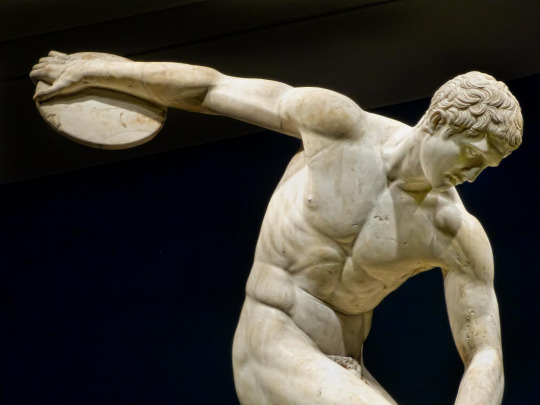
The Diskobolos or Discus Thrower, Roman copy of a 450-440 BCE Greek bronze by Myron recovered from Emperor Hadrian’s Villa in Tivoli, Italy. (British Museum, London). Photo by Mary Harrsch.

Terracotta bell-krater, Orpheus among the Thracians, ca. 440 BCE, The Metropolitan Museum of Art.
Hellenistic Art (323 - 30 BCE)
Hellenistic art perfects classical art and adds more diversity and nuance to it, something that can be explained by the rapid geographical expansion of Greek influence through Alexander’s conquests. Sculpture, painting and architecture thrived whereas there is a decrease in vase painting. The Corinthian style starts getting popular. Sculpture becomes even more naturalistic and expresses emotion, suffering, old age and various other states of the human condition. Statues become more complex and extravagant. Everyday people start getting portrayed in art and sculpture without extreme beauty standards imposed. We know there was a huge rise in wall painting, landscape art, panel painting and mosaics.

Mosaic from Thmuis, Egypt, created by the Ancient Greek artist Sophilos (signature) in about 200 BC, now in the Greco-Roman Museum in Alexandria, Egypt. The woman depicted in the mosaic is the Ptolemaic Queen Berenike II (who ruled jointly with her husband Ptolemy III) as the personification of Alexandria.

Agesander, Athenodore and Polydore: Laocoön and His Sons, 1st century BC
Greco-Roman Art (30 BC - 330 AD)
This period is characterized by the almost entire and mutually influential merging of Greek and Roman artistic expression, in light of the Roman conquest of the Hellenistic world. For this era, it is hard to find sources exclusively for Greek art, as often even art crafted by Greeks of the Roman Empire is described as Roman. In general, Greco-Roman art reinforces the new elements of Hellenistic art, however towards the end of the era, with the rise of early Christianity in the Eastern aka the Greek-influenced part of the empire, there are some gradual shifts in the art style towards modesty and spirituality that will in time lead to the Byzantine art. During this era mosaics become more loved than ever.
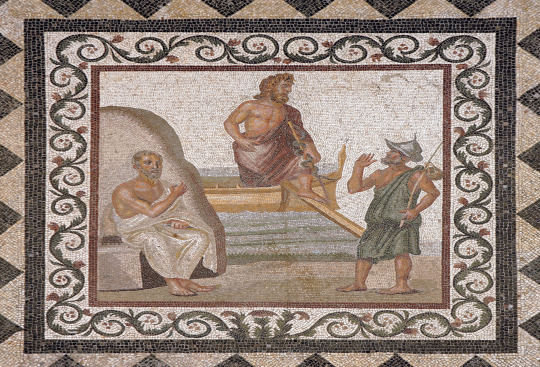
A mosaic from the island of Kos (the birthplace of Hippocrates) depicting Hippocrates (seated) and a fisherman greeting the god Asklepios (center) as he either arrives or disembarks from the island. Second or third century CE.
Introduction to Byzantine Art
Byzantine art originated and evolved from the now Christian Greek culture of the Eastern Roman Empire. Although the art produced in the Byzantine Empire was marked by periodic revivals of a classical aesthetic, it was above all marked by the development of a new aesthetic defined by its salient "abstract", or anti-naturalistic character. If classical art was marked by the attempt to create representations that mimicked reality as closely as possible, Byzantine art seems to have abandoned this attempt in favor of a more symbolic approach. The subject matter of monumental Byzantine art was primarily religious and imperial: the two themes are often combined.
Early Byzantine Art (330 - 842 AD)
The establishment of the Christian religion results in a new artistic movement, centered around the faith. However, ancient statuary remains appreciated. Most fundamental changes happen in monumental architecture, the illustration of manuscripts, ivory carving and silverwork. Exceptional mosaics become integral in artistic expression. The last 100 years of this period are defined by the Iconoclasm, which temporarily restricts entirely the previously thriving figural religious art.

Mosaics in the Rotunda of Thessaloniki, 4th - 6th century AD.
Macedonian Art & Komnenian Age (843 - 1204 AD)
These artistic periods correspond to the middle Byzantine period. After the end of the Iconoclasm, there is a revival in the arts. The art of this period is frequently called Macedonian art, because it occurred during the Macedonian imperial dynasty which generally brought a lot of prosperity in the empire. There was a revival of interest in the depiction of subjects from classical Greek mythology and in the use of Hellenistic styles to depict religious subjects. The Macedonian period also saw a revival of the late antique technique of ivory carving. The following Komnenian dynasty were great patrons of the arts, and with their support Byzantine artists continued to move in the direction of greater humanism and emotion. Ivory sculpture and other expensive mediums of art gradually gave way to frescoes and icons, which for the first time gained widespread popularity across the Empire. Apart from painted icons, there were other varieties - notably the mosaic and ceramic ones.
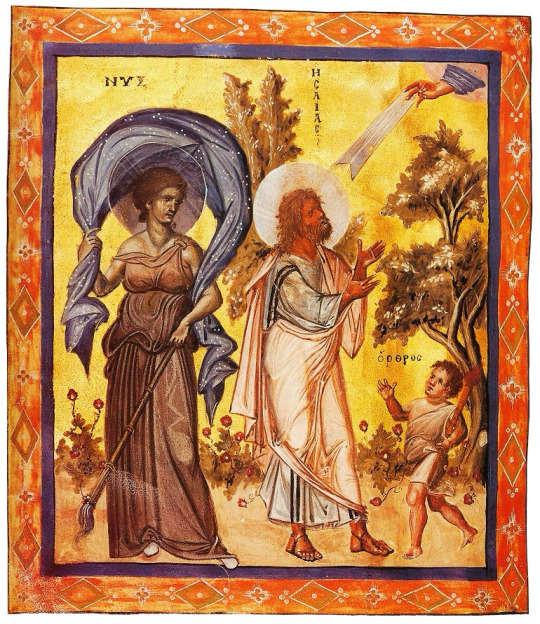
Paris Psalter, 10th century AD. Prophet Isaiah from the Old Testament in the company of the symbolisms for night (clear inspiration drawn from the ancient deity Nyx) and morning (Orthros, not to be confused with the mythological creature).
Palaeologan Renaissance (1261 - 1453)
The Palaeologan Renaissance is the final period in the development of Byzantine art. Coinciding with the reign of the Palaeologi, the last dynasty to rule the Byzantine Empire (1261–1453), it was an attempt to restore Byzantine self-confidence and cultural prestige after the empire had endured a long period of foreign occupation. The legacy of this era is observable both in Greek culture after the empire's fall and in the Italian Renaissance. Contemporary trends in church painting favored intricate narrative cycles, both in fresco and in sequences of icons. The word "icon" became increasingly associated with wooden panel painting, which became more frequent and diverse than fresco and mosaics. Small icons were also made in quantity, most often as private devotional objects.
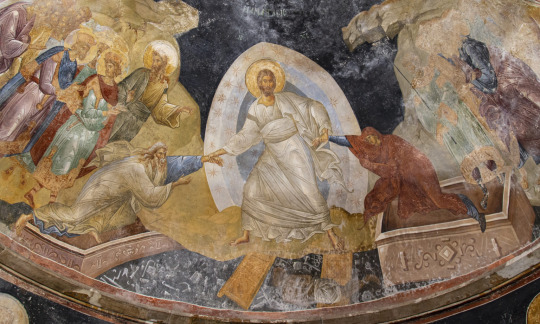
Detail of Anástasis (Resurrection) fresco, c. 1316–1321, Chora church, Constantinople (Istanbul) (photo: byzantologist).
Cretan School (15th - 17th century)
Cretan School describes an important school of icon painting, under the umbrella of post-Byzantine art, which flourished while Crete was under Venetian rule during the Late Middle Ages, reaching its climax after the Fall of Constantinople, becoming the central force in Greek painting during the 15th, 16th and 17th centuries. By the late 15th century, Cretan artists had established a distinct icon-painting style, distinguished by "the precise outlines, the modelling of the flesh with dark brown underpaint, the bright colours in the garments, the geometrical treatment of the drapery and, finally, the balanced articulation of the composition". Contemporary documents refer to two styles in painting: the maniera greca (in line with the Byzantine idiom) and the maniera latina (in accordance with Western techniques), which artists knew and utilized according to the circumstances. Sometimes both styles could be found in the same icon. The most famous product of the school was the painter Domenikos Theotokopoulos, internationally known as El Greco, whose art evolved and diverged significantly in his later years when he moved in Spain and was involved in the Spanish Renaissance, and though it often alienated his western contemporary artists, nowadays it is viewed as an incidental early birth of Impressionism in the mid of the Renaissance’s peak.

Icon by Andreas Pavias (1440-1510), Cretan School, from Candia (Venetian Kingdom of Crete). The Latin inscription suggests the icon was meant for commercial purposes in Western Europe. National Museum, Athens. (Source: https://russianicons.wordpress.com/tag/cretan-school/)

Crucifixion (detail), El Greco (Doménikos Theotokópoulos), ca. 1604 - 1614.
Heptanesian School (17th - 19th century)
The Heptanesian school succeeded the Cretan School as the leading school of Greek post-Byzantine painting after Crete fell to the Ottomans in 1669. Like the Cretan school, it combined Byzantine traditions with an increasing Western European artistic influence and also saw the first significant depiction of secular subjects. The center of Greek art migrated urgently to the Heptanese (Ionian) islands but countless Greek artists were influenced by the school including the ones living throughout the Greek communities in the Ottoman Empire and elsewhere in the world. Greek art was no longer limited to the traditional maniera greca dominant in the Cretan School. Furthermore, the Heptanesian school was the basis for the emergence of new artistic movements such as the Greek Rocco and Greek Neoclassicism. The movement featured a mixture of brilliant artists.

Archangel Michael, Panagiotis Doxaras, 18th century.
Greek Romanticism (19th century)
Modern Greek art, after the establishment of the Greek Kingdom, began to be developed around the time of Romanticism. Greek artists absorbed many elements from their European colleagues, resulting in the culmination of the distinctive style of Greek Romantic art, inspired by revolutionary ideals as well as the country's geography and history.

Vryzakis Theodoros, The Exodus from Missolonghi, 1853. National Gallery, Athens.
The Munich School (19th century Academic Realism)
After centuries of Ottoman rule, few opportunities for an education in the arts existed in the newly independent Greece, so studying abroad was imperative for artists. The most important artistic movement of Greek art in the 19th century was academic realism, often called in Greece "the Munich School" because of the strong influence from the Royal Academy of Fine Arts of Munich where many Greek artists trained. In academic realism the imperative is the ethography, the representation of urban and/or rural life with a special attention in the depiction of architectural elements, the traditional cloth and the various objects. Munich School painters were specialized on portraiture, landscape painting and still life. The Munich school is characterized by a naturalistic style and dark chiaroscuro. Meanwhile, at the time we observe the emergence of Greek neoclassicism and naturalism in sculpture.

Nikolaos Gyzis, Learning by heart, 1883.
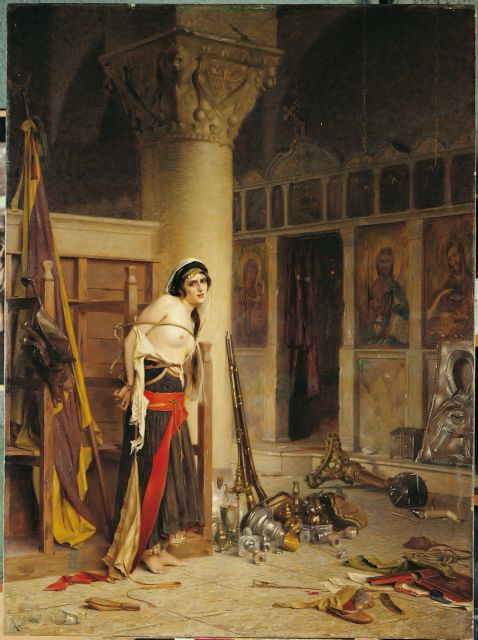
Rallis Theodoros, The Booty, before 1906.
20th Century Modern & Contemporary Greek Art
At the beginning of the 20th century the interest of painters turned toward the study of light and color. Gradually the impressionists and other modern schools increased their influence. The interest of Greek painters, artists changes from historical representations to Greek landscapes with an emphasis on light and colours so abundant in Greece. Representatives of this artistic change introduce historical, religious and mythological elements that allow the classification of Greek painting into modern art. The era of the 1930s was a landmark for the Greek painters. The second half of the 20th century has seen a range of acclaimed Greek artists too serving the movements of surrealism, metaphysical art, kinetic art, Arte Povera, abstract excessionism and kinetic sculpture.
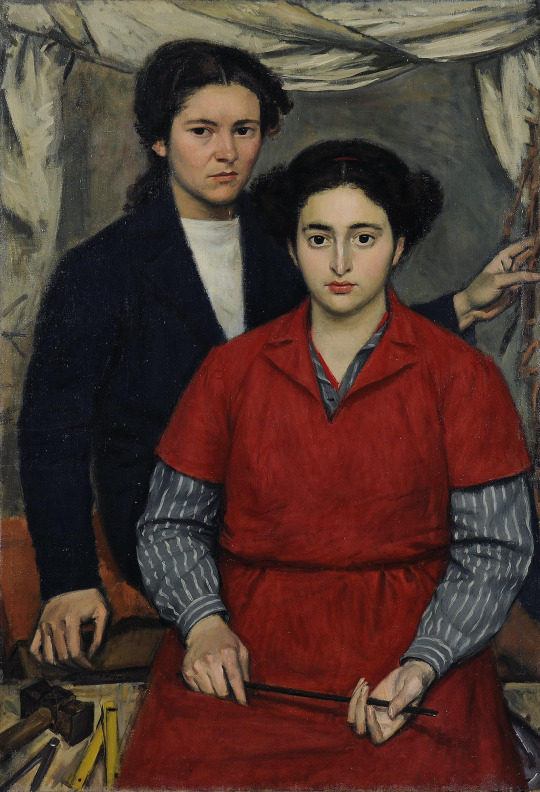
Yiannis Moralis, Two friends, 1946.
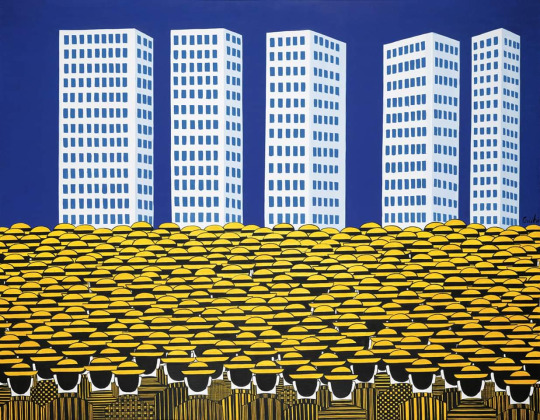
Art by Giannis Gaitis (1923-1984), famous for his uniformed little men.

By Yorghos Stathopoulos (1944 - )
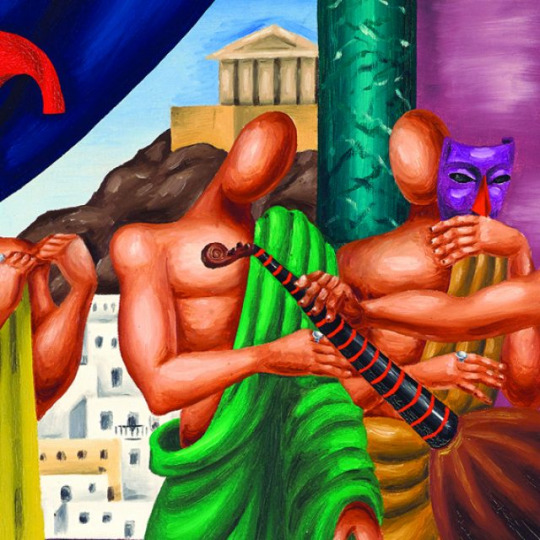
Art (detail) by Nikos Engonopoulos (1907 - 1985)
Folk, Modern Ecclesiastical and Secular Post-Byzantine Art
Ecclesiastical art, church architecture, holy painting and hymnology follow the order of Greek Byzantine tradition intact. Byzantine influence also remained pivotal in folk and secular art and it currently seems to enjoy a rise in national and international interest about it.

A modern depiction of the legendary hero Digenes Akritas depicted in the style of a Byzantine icon by Greek artist Dimitrios Skourtelis. Credit: Dimitrios Skourtelis / Reddit

Erotokritos and Aretousa by folk artist Theophilos (1870-1934)

Example of Modern Greek Orthodox murals, Church of St. Nicholas.

Ancient Greek philosophers depicted in iconographic fashion in one of Meteora’s monasteries. Each is holding a quote from his work that seems to foreshadow Christ. Shown from left to right are: Homer, Thucydides, Aristotle, Plato and Plutarch. This is not as weird as it may initially seem: it was a recurrent belief throughout the history of Christian Greek Orthodoxy that the great philosophers of the world heralded Jesus' birth in their writings - it was part of the eras of biggest reconciliation between Greek Byzantinism and Classicism.

Prophet Elijah icon with Chariot of Fire, Handmade Greek Orthodox icon, unknown iconographer. Source
If you see this, thanks very much for reading this post. Hope you enjoyed!
#greece#art#europe#history#culture#greek art#artists#greek culture#history of art#classical art#ancient greek art#byzantine greek art#christian art#orthodox art#modern art#modern greek art#anon#ask
57 notes
·
View notes
Text
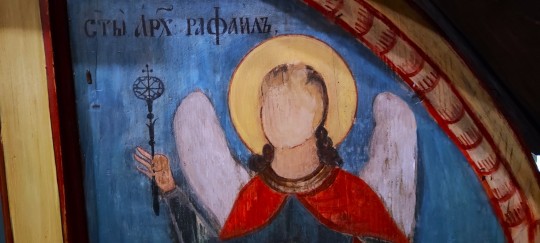
Archangel Raphael without a face
#angel#saint#orthodox christianity#orthodox church#eastern orthodoxy#orthodox art#raphael#archangel raphael#archangel
33 notes
·
View notes
Text

From an ad in the February 1977 issue of Apollo magazine
104 notes
·
View notes
Text

I can't stop myself from putting here something from my Real Life Real Work again: just look, what have I found right now in some Church Slavic manuscript from the late 13th/beginning of the 14th century:

Just look at these two charming boys embracing each other!
Sometimes I really like my work, I really do.
36 notes
·
View notes
Text
Holy Russia, by Nesterov. the poor and destitute of Russia are received by Christ in their own setting.

#eastern orthodox#orthodox art#russia#tsardom of russia#jesus christ#mikhail nesterov#russian painter#pravoslavlje#old believers#russian#religious iconography
144 notes
·
View notes
Photo

Historical item of the week⌛️
Onufri Icons
This is one of the richest collections of Orthodox religious icons in Europe. They were created by the Albanian artist Onufri Argitis, who painted them during the 16th century using fresco and tempera on wood. Today most of these icons can be seen in the Onufri Iconographic Museum, located in the city of Berat, Albania.
Objeto histórico de la semana⌛️
Iconos de Onufri
Esta es una de las colecciones mas ricas de iconos religiosos ortodoxos en Europa. Fueron creadas por el artista albano Onufri Argitis, quien las pinto durante el siglo XVI en técnica de fresco y tempera sobre madera. Hoy la mayor parte de estos iconos pueden verse en el Museo Iconográfico de Onufri, ubicado en la ciudad de Berat, Albania.
4 notes
·
View notes
Text

Jesus is holding Baby Jesus
0 notes
Text
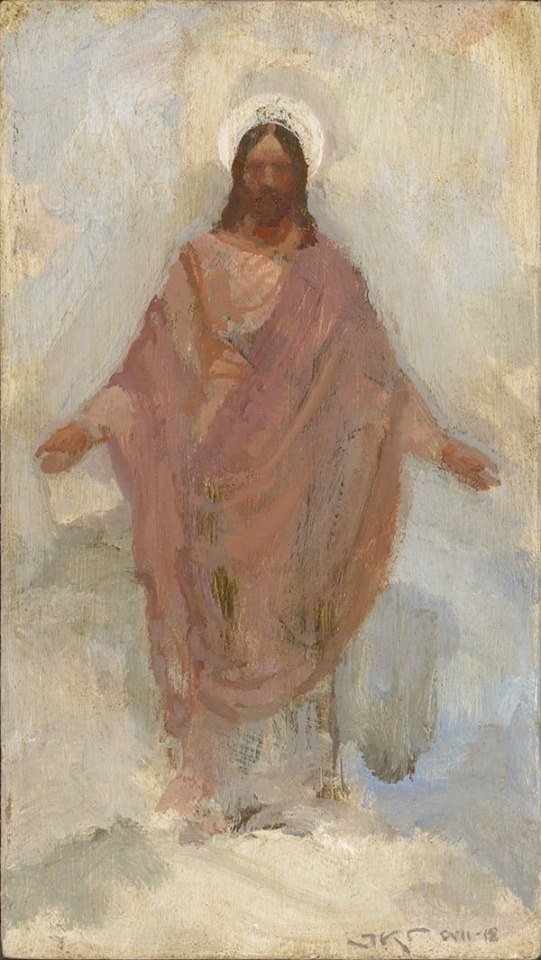

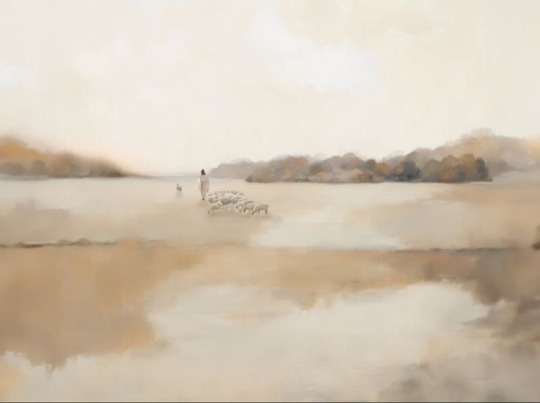



A little while, and you will see me no longer. Again in a little while, and you will see me.
John 16:16
#easter#easter sunday#holy week#lent 2024#Christ is risen#resurrection#jesus#quotes#bible quote#bible verse#catholic#Christian#orthodox#religious imagery#religious art#light moodboard#moodboard#oil painting#acrylic#poetry#books#philosophy#hopecore#aesthetic
1K notes
·
View notes
Text
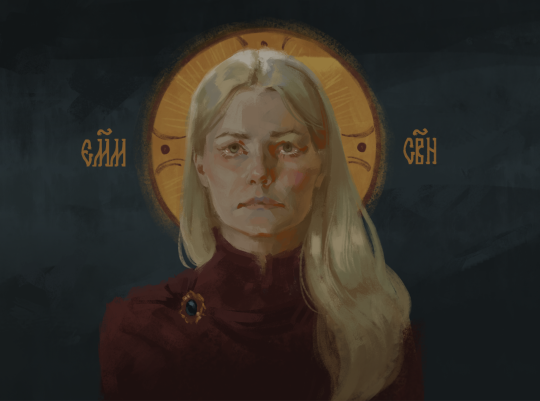
why have you forsaken me
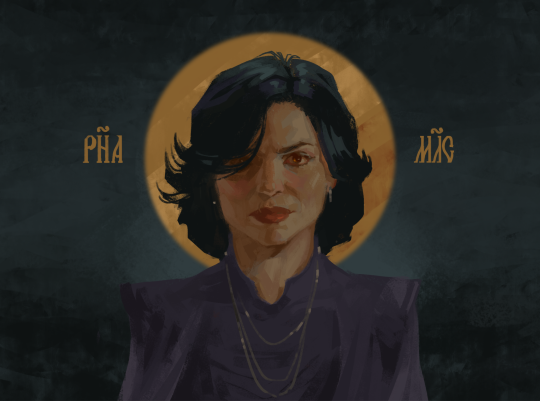
I won't let you do the same to Emma
#orthodox christianity but make it gay#dyptich#swanqueen#regina mills#emma swan#ouat#digital painting#emma x regina#evil queen#digital art#art
721 notes
·
View notes
Photo
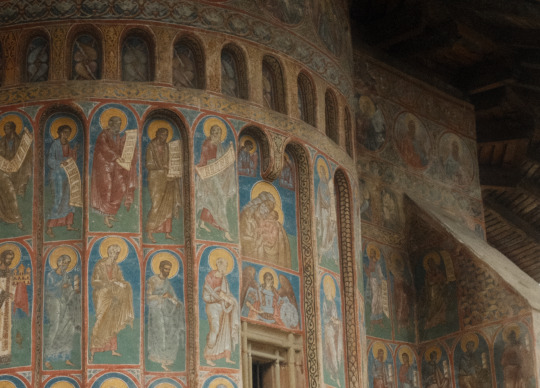


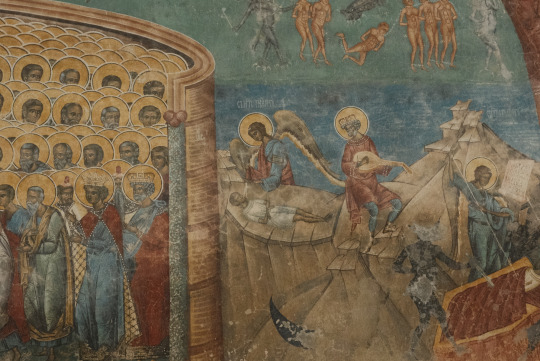
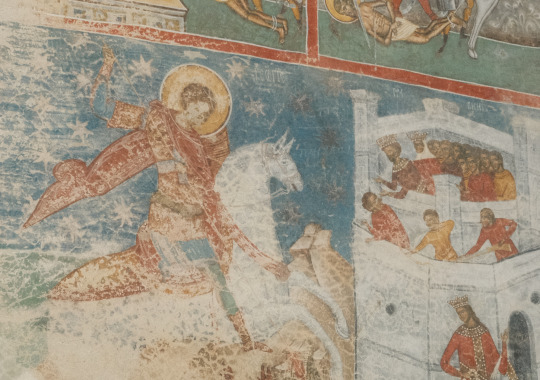



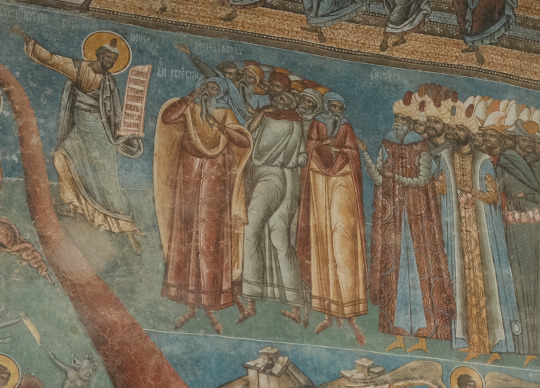

Voroneț Monastery, Gura Humorului, Bukovina, Romania
10 April 2023
Fujifilm X100V
#my photo#romania#romanisme#orthodoxy#voroneț#christianity#orthodox art#christian art#bucovina#bukovina#x100v#fujix100v
428 notes
·
View notes
Text

This icon has been written on dried flounder. Sacred images on dried fish are extremely rare. They began to be painted in the 19th century by Ukrainian fish and salt merchants, called “chumaks”. They brought their goods from the Black and Azov Seas using carts pulled by oxen, and then sold them at street markets.
Chumaks spent a lot of time on the road. They attached such images to their carts, probably as travel icons, in the same way as some modern Christians place icons in their cars
It is possible that chumaks chose fish as the material for their icons not by chance, since the fish is one of the oldest Christian symbols. In Greek, ichthys is an acronym meaning “Jesus Christ, Son of God, Saviour”. It is also possible that the traditional wooden base was much more expensive than dried fish and quickly deteriorated under the influence of sun and precipitation. [source]
803 notes
·
View notes
Text

Vasily Wilhelm Alexandrovich Kotarbiński (Polish-Russian, 1849-1921)
Prayer for the cup, n.d.
Kyiv National Museum of Russian Art, Ukraine
“Father, if you are willing, please take this cup of suffering away from me. Yet I want your will to be done, not mine” (Luke 22:42). - The Bible
#Vasily Wilhelm Alexandrovich Kotarbiński#polish art#polish#russian art#russian#russia#christian art#christianity#christentum#catholic#lutheran#anglican#roman catholic#orthodox#jesus christ#catholic art#poland#art#fine art#fine arts#classic art#painting#artwork#1800s
770 notes
·
View notes
Text

faceless archangel michael holding the scales of justice
#angel#church#orthodox art#orthodox christianity#archangel michael#art#photography#saint#justice#scales of justice
11 notes
·
View notes
Text
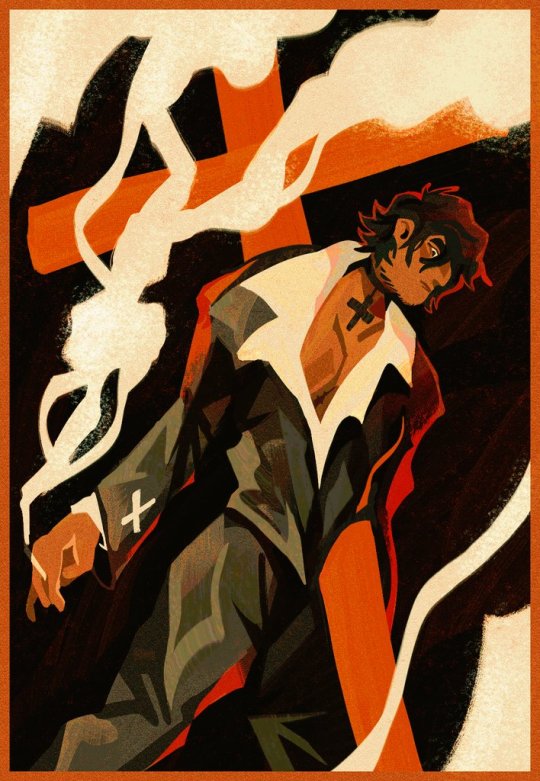
hes so fine i wish catholic people were real
#wws design is so simple and yet i fighbt for my life trying to capture the essence and overall shape and its fun.its fun i love simple dsgn#ZAYN PLEASE STOP SMOKING IMGAGE JPEG#thoughts that haunt you while u draw ww: does my insane orthodox grandma think drawing a cross with a bodacious anime guy is blasphemy#am i goingto hell#wolfwood#wolfwood d nicholas#this gyus is like nicotine to lesbians uilove you wolf wood from tres pistole#insane. insane ass Drawing im sory people who follwed me for paleoart and you get this mans bodonks on your timelune fogrive me forgive me?#trimax#fanart tag#trigun#art tag
2K notes
·
View notes